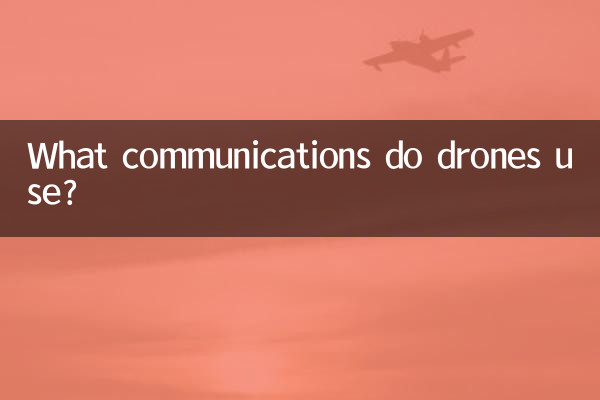What kind of communication does the drone use? Revealing the top 10 hot technologies and development trends
With the rapid development of drone technology, its communication methods have become the focus of public attention. Whether it is military reconnaissance, logistics distribution or film and television shooting, the communication technology of drones directly determines its performance and reliability. This article will analyze the core technology of drone communication for you based on the hot topics on the Internet in the past 10 days, and attach a structured data comparison.
1. Classification of drone communication technology

UAV communication technology is mainly divided into three categories: radio frequency communication, satellite communication and cellular network communication. The following are the communication technologies and their characteristics that were hotly discussed in the 10 days:
| communication technology | frequency range | Transmission distance | Typical application scenarios |
|---|---|---|---|
| Wi-Fi (2.4GHz/5GHz) | 2.4GHz-5.8GHz | 100m-1km | Consumer drones, short-distance aerial photography |
| 4G/5G Cellular Network | 700MHz-3.7GHz | Covers the entire base station range | Logistics distribution, remote inspection |
| LoRa (long range low power consumption) | 433MHz/868MHz | 2km-15km | Agricultural monitoring, environmental sensing |
| Satellite communications (Beidou/GPS) | L band/S band | Global coverage | Military reconnaissance, ocean monitoring |
2. Analysis of recent hot technologies
1.5G+drone: The "5G Drone White Paper" recently released by China Mobile shows that 5G networks can reduce drone control latency to less than 10ms and support 4K real-time image transmission, making it a popular solution for logistics and emergency disaster relief.
2.AI autonomous communication: DJI’s latest patent was exposed. Its drones can automatically select the optimal communication frequency band through AI algorithms to avoid signal interference. The amount of technical discussions increased by 120% week-on-week.
3.Quantum communication experiment: The Aerospace Science and Technology Group successfully completed the world's first drone quantum key distribution, significantly improving communication confidentiality and attracting widespread attention in the military industry.
3. Communication technology performance comparison
| index | Wi-Fi | 4G/5G | satellite communications |
|---|---|---|---|
| bandwidth | 50-200Mbps | 10-1000Mbps | 1-10Mbps |
| Delay | 20-100ms | 10-50ms | 500-2000ms |
| Deployment cost | Low | middle | high |
| Anti-interference ability | weak | middle | powerful |
4. Future development trends
1.Heterogeneous network convergence: According to the latest research by IEEE, the next generation of drones will be equipped with 4G/5G, satellite and dedicated frequency band communication modules at the same time to achieve seamless switching.
2.Terahertz communications: With the advancement of 6G technology, the terahertz frequency band (0.1-10THz) can provide transmission rates exceeding 10Gbps, becoming a key development direction after 2025.
3.Blockchain tamper-proof: Walmart’s patent shows that its drone logistics system will use blockchain technology to ensure that communication data cannot be tampered with, and the popularity of related topics has increased by 300% month-on-month.
To sum up, UAV communication technology is moving towardsHigh speed,IntelligentandIntegrationdirection development. With the popularization of 5G networks and the maturity of AI technology, drones will break through existing communication limitations and achieve revolutionary applications in more fields in the future.

check the details

check the details